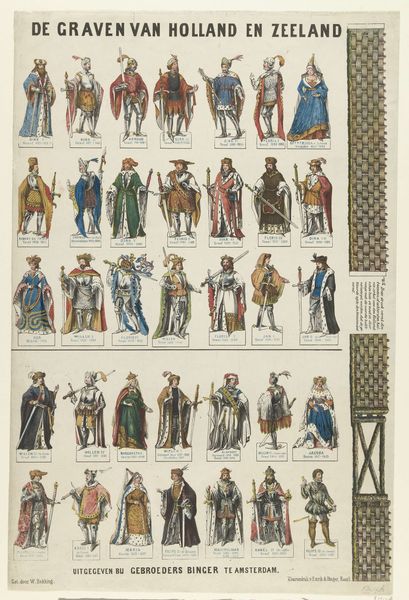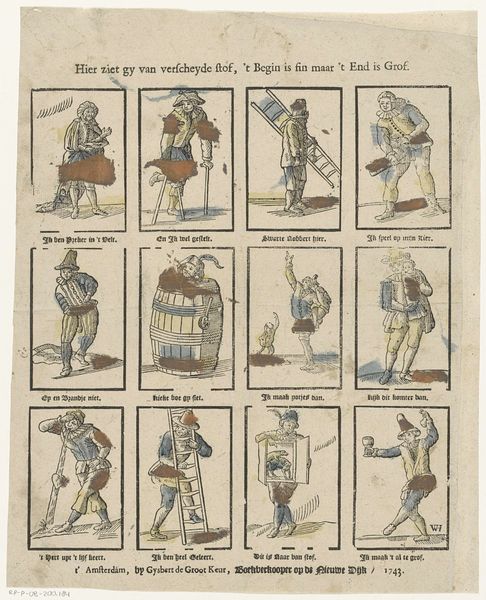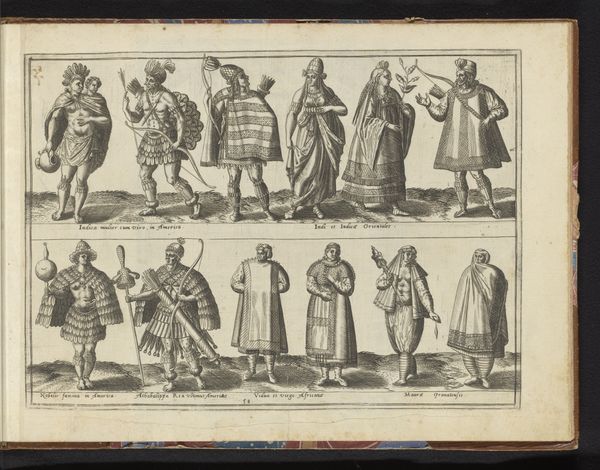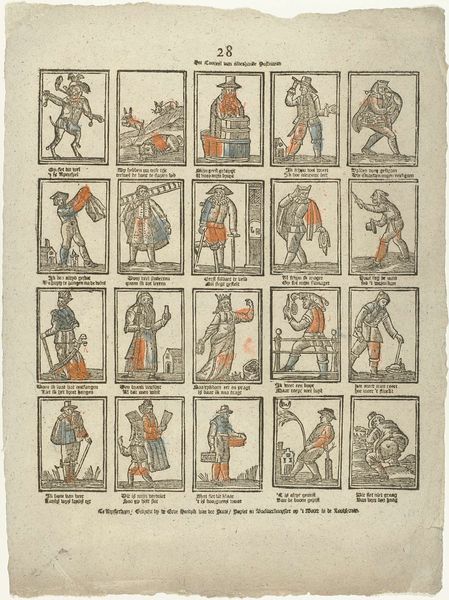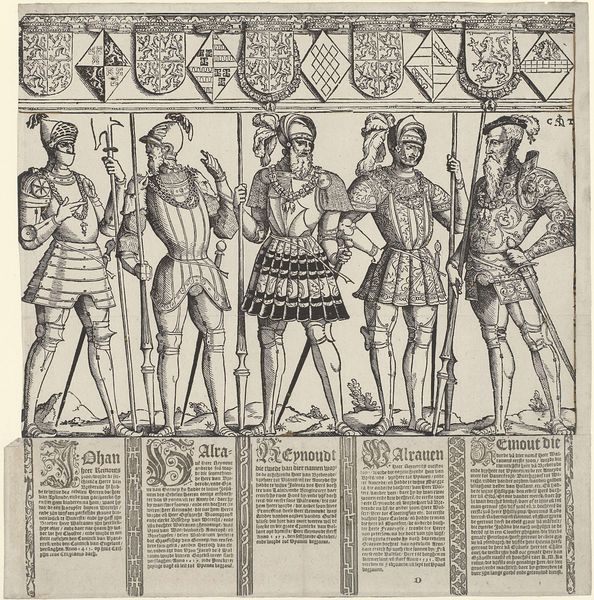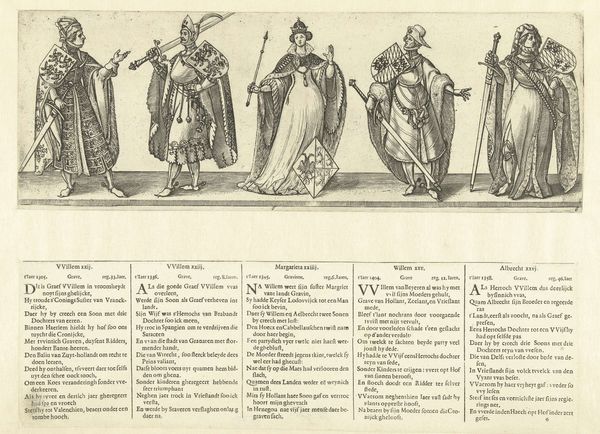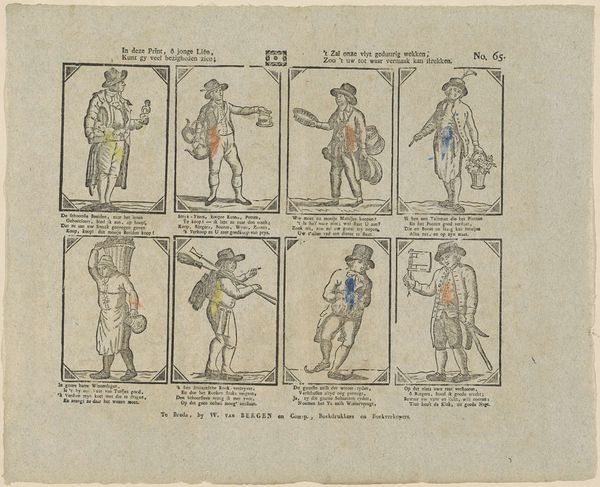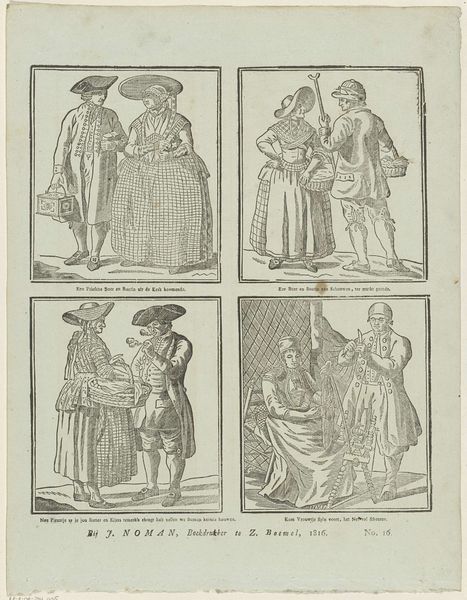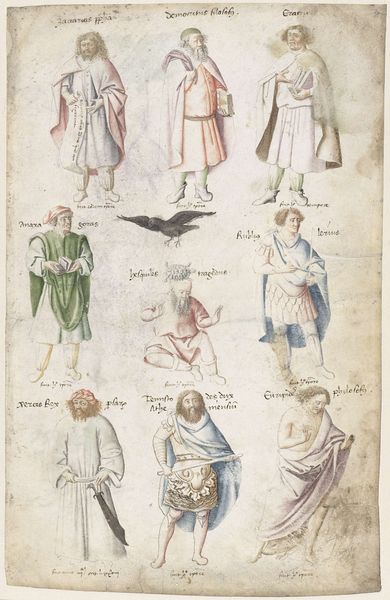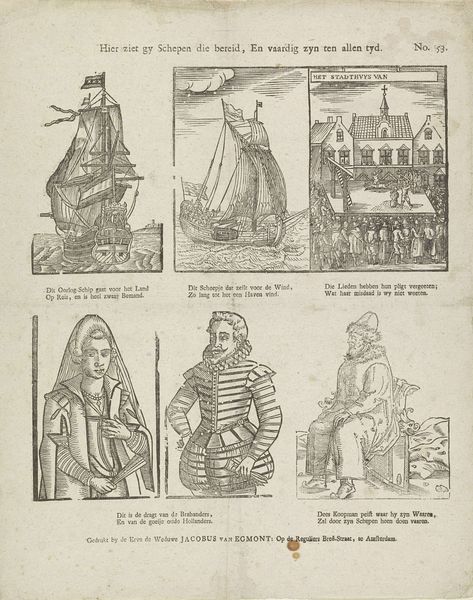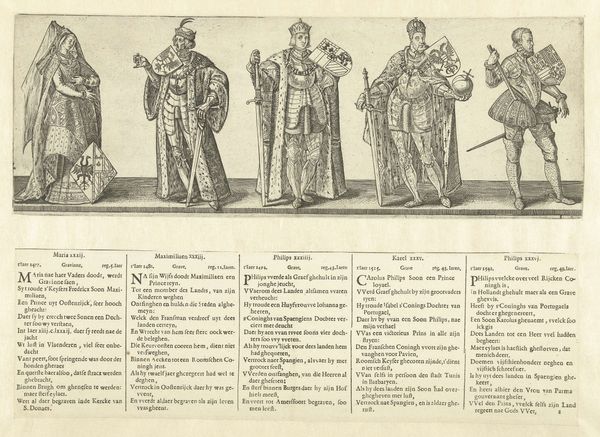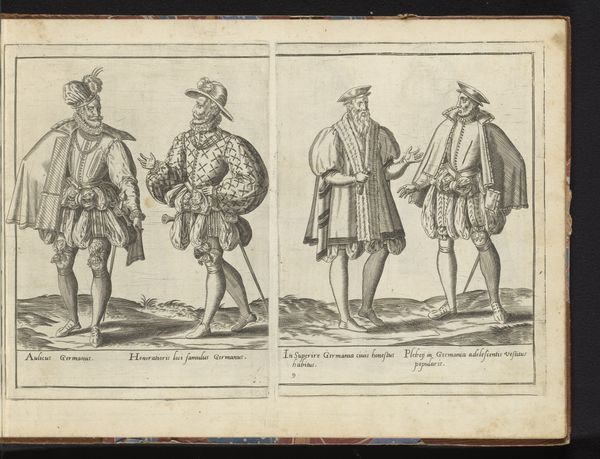
Ziet, kinderen! hier twee Azianen; / Dan volgen er twee Afrikanen; / Drie zijn er uit Austrazia, / En één slechts uit Amerika 1820 - 1838
0:00
0:00
print, engraving
#
portrait
# print
#
figuration
#
orientalism
#
genre-painting
#
history-painting
#
academic-art
#
engraving
Dimensions: height 335 mm, width 420 mm
Copyright: Rijks Museum: Open Domain
Curator: My first impression? There’s a curious detachment in the way each figure is presented; they’re like specimen pinned to a board. It’s...clinical, yet fantastical somehow. Editor: Indeed. Let's delve into this intriguing print by Christiaan Jacob Schuyling, dating from 1820 to 1838. Its elaborate title, "Ziet, kinderen! hier twee Azianen; / Dan volgen er twee Afrikanen; / Drie zijn er uit Austrazia, / En één slechts uit Amerika," basically announces its intention to depict inhabitants of various continents. Curator: Announces… or perhaps *dictates*? It’s such an odd choice of medium, an engraving almost seems to flatten the complexities of human experience, like trying to capture a rainbow in a teacup. Editor: It speaks to the period's inclination toward categorization, towards mapping the world through a very specific European lens, of course. We are seeing representations deeply embedded in the history of colonialism. Notice the varied depictions of clothing, physical features—details emphasized or omitted according to prevailing cultural biases of the time. The piece utilizes academic art conventions but hints also to a rise in orientalism and othering through history painting and genre-painting. Curator: And some are far more…let's say, generously rendered than others. The individual from Australia has the blankest face; others carry clear attributes to hint toward personality traits. There's an evident attempt at objectivity which ultimately betrays something much messier—an artistic ambivalence that bubbles beneath the surface. Editor: Exactly! The apparent dispassion is, ironically, loaded with ideology. It highlights the power dynamics inherent in observing and classifying diverse cultures. This image becomes less about genuine understanding and more about reinforcing existing power structures and narratives of self/otherness. Curator: The muted colours too contribute; an intentionally drained palette speaks of detachment and even scientific observation rather than engagement, wouldn't you agree? Editor: It certainly reinforces the air of ‘objective’ record-keeping while subtly deflecting any accusation of artistic engagement with ethical considerations. It's a document steeped in its era’s cultural politics—a conversation starter. Curator: Absolutely, it serves as a lens to reassess our world now, how little but also how much has shifted, even how it has returned in various degrees across two centuries since. Editor: Indeed, an engraving with unsettling undertones, isn't it? This print forces a needed reflection of history's influence and continuing implications regarding intersectional social theories and human identity.
Comments
No comments
Be the first to comment and join the conversation on the ultimate creative platform.

